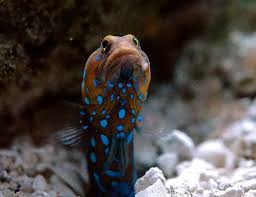Exploring Dragon Stories in Chinese Folklore

In the rich tapestry of Chinese folklore, dragons are not mere mythical creatures; they are central to the cultural, spiritual, and historical identity of the Chinese people. These creatures, often seen as powerful and auspicious symbols, have played a significant role in storytelling for centuries, with countless legends, myths, and tales surrounding them. Through these dragon stories, various aspects of Chinese culture, including values, cosmology, and human connection with the natural world, are explored. This article delves into some of the most iconic dragon stories in Chinese folklore, shedding light on their meaning, symbolism, and the deep connection between dragons and Chinese traditions.
The Role of Dragons in Chinese Folklore
Dragons in Chinese folklore are generally depicted as benevolent creatures, unlike their often malevolent counterparts in Western mythologies. These dragons are closely linked to the forces of nature, particularly water, and are believed to control rivers, seas, and rainfall. They are seen as symbols of power, strength, and good fortune, as well as protectors of the land and its people. In Chinese tradition, dragons are revered as beings capable of bringing prosperity, safeguarding the natural world, and maintaining balance.
The dragon, or “Long” (龙), is associated with the emperor and the imperial family in Chinese culture, often representing their divine right to rule. Additionally, dragons are thought to have the ability to shape-shift, move between realms, and possess mystical powers. These qualities make dragons central figures in many of China’s most enduring folk tales and legends.
The Legend of the Dragon King
One of the most famous and widely told dragon stories in Chinese folklore is the tale of the Dragon King (龙王), a powerful deity who rules over the seas and waters. The Dragon King is often depicted as a majestic, multi-headed creature who commands respect and is believed to have the power to control weather patterns, particularly rain and storms.
The Dragon King’s legend has many regional variations, but one of the most common versions involves the Dragon King being approached by farmers seeking rain for their crops. In many parts of China, the land is dependent on rainfall for agriculture, and when droughts occur, the people would turn to the Dragon King to intervene.
In one popular version of the story, the Dragon King is initially reluctant to provide rain, as he is angered by human behavior or disrespected by the people. However, after a series of trials and demonstrations of respect, the Dragon King agrees to release rain to quench the parched land. This story highlights the reciprocal relationship between humans and nature in Chinese folklore, where respect for natural forces is essential for harmony and prosperity.
The Dragon King is often invoked during traditional ceremonies and festivals, where people pray for rain, good harvests, and protection from floods. Temples dedicated to the Dragon King can be found in many regions of China, where offerings are made to the deity, and rituals are performed to seek his blessings.
The Story of the Carp and the Dragon Gate
Another iconic dragon tale in Chinese folklore is the Legend of the Carp and the Dragon Gate. This story is closely related to the Chinese cultural emphasis on perseverance, ambition, and the belief in transformation.
The story begins with a carp that, through years of swimming up the Yellow River, reaches the Dragon Gate, a legendary waterfall. The carp struggles against the strong current and hardships of the river, but its determination remains unwavering. According to the legend, the carp’s persistence is rewarded when it leaps over the waterfall, transforming into a magnificent dragon.
The legend symbolizes the virtues of perseverance and hard work. It is said that anyone who is able to overcome significant obstacles, as the carp did, will be rewarded with great success and transformation, just as the carp is transformed into a dragon. This story is often used in Chinese culture as a metaphor for personal growth, achievement, and the belief that anything is possible with determination and effort.
The Carp and the Dragon Gate story has transcended folklore, becoming a popular cultural reference in China, where it is often cited in the context of educational pursuits and career advancement. The image of a carp jumping over the Dragon Gate is a widely recognized symbol of success and good fortune, especially during the annual Dragon Boat Festival.
The Tale of the Eight Immortals and the Dragon
In another popular tale, the Eight Immortals (八仙) – a group of legendary figures who embody Taoist virtues – encounter a dragon while on their travels. The story is part of a larger collection of adventures in which the Eight Immortals use their powers to overcome challenges and help those in need.
One version of the story involves the Eight Immortals traveling to the Eastern Sea, where they encounter a malevolent dragon who is terrorizing the local villages. The dragon is feared for its destructive powers, which include summoning storms and causing floods. The Eight Immortals decide to confront the dragon, using their magical abilities to subdue it. With the dragon defeated, the immortals restore peace to the region.
This story is a powerful reminder of the struggle between good and evil, as well as the idea that even the most fearsome creatures can be vanquished by virtuous actions and teamwork. The Eight Immortals represent the harmony between human wisdom, divine intervention, and the forces of nature, making their interactions with dragons a key part of Chinese mythology.
The Legend of the Yellow Emperor and the Dragon
Another dragon-related myth deeply embedded in Chinese folklore is the Legend of the Yellow Emperor (黄帝) and his connection to the dragon. The Yellow Emperor, or Huangdi, is considered one of the founding figures of Chinese civilization and is believed to have been a leader who brought harmony, prosperity, and innovation to ancient China.
According to the legend, the Yellow Emperor was born under the protection of a dragon. The dragon is said to have guided him throughout his life, offering wisdom and assistance in times of war and peace. In some versions of the story, the Yellow Emperor is even depicted as transforming into a dragon during key moments of his reign, symbolizing his close connection to the forces of nature and his divine right to rule.
The dragon’s presence in the tale of the Yellow Emperor is significant, as it connects the concept of imperial power with the divine. In Chinese folklore, the emperor is often portrayed as a dragon, and it is believed that the emperor’s actions are guided by the spirits of dragons. This connection between rulers and dragons reinforces the idea that the emperor has the mandate of heaven and the ability to control the forces of nature.
The Dragon and the Phoenix
The Dragon and the Phoenix (龙凤呈祥) are one of the most well-known symbolic pairs in Chinese culture. The dragon represents masculinity, power, and strength, while the phoenix represents femininity, grace, and beauty. Together, they symbolize the harmonious balance of opposites and are frequently featured in Chinese marriage ceremonies, where the two creatures are seen as representations of the ideal union.
The Dragon and the Phoenix are also featured in numerous folk tales and legends. In some stories, the dragon and phoenix are depicted as partners who work together to protect the land and its people. The harmony between these two creatures serves as a metaphor for the balance of male and female energies, as well as the unity of opposing forces in the universe.
The Role of Dragons in Chinese Cultural Traditions
Dragons are deeply woven into the fabric of Chinese cultural traditions, and their presence is felt in various forms, from festivals and holidays to art and literature. The Chinese New Year is a prime example, where dragon dances are performed in communities to usher in good luck, health, and prosperity for the coming year.
Additionally, dragons are a central figure in Feng Shui, where their symbolism is used to create harmony in homes and businesses. The power of the dragon is harnessed to bring positive energy and remove negative influences, promoting overall well-being and success.
Conclusion
The stories of dragons in Chinese folklore are much more than simple tales of mythical creatures; they are rich with meaning and symbolism that reveal the values, beliefs, and spirituality of the Chinese people. From the benevolent Dragon King who controls the waters to the carp that transforms into a dragon, these stories encapsulate the ideals of perseverance, transformation, and the balance of natural forces.
Through these dragon stories, we see how dragons are deeply connected to Chinese history, culture, and religion. They represent the harmony between humans and nature, the power of good over evil, and the enduring belief in the transformative power of determination and virtue. Whether depicted as guardians of the earth, protectors of the people, or symbols of imperial power, dragons remain a lasting and powerful symbol in the folklore of China, shaping the culture and worldview of its people for centuries.

